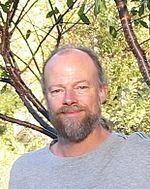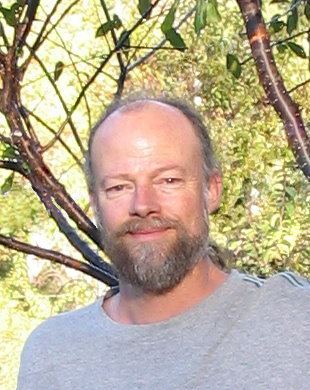Language English Subject Arborsculpture Nationality American Name Richard Reames | Citizenship United States Role Author | |
 | ||
Occupation Arborsculptor, nursery owner, writer Books How to Grow a Chair: The Art of Tree Trunk Topiary, Arborsculpture: Solutions for a Small Planet | ||
Richard C. Reames (born September 20, 1957) is an American arborsculptor, and nurseryman, author of two self-published books and a public speaker who lives and works in Williams, Oregon. He sometimes teaches at the John C. Campbell Folk School. He coined the word "arborsculpture", as a substitute for the word pleaching.
Contents

Biography
Richard Reames was born in 1957 and grew up near Santa Cruz, California. Which was within 10 miles of Axel Erlandson’s famed circus trees, known at that time as The Lost World.
Richard's mother showed him the value in having a vegetable garden and working with nature. This led to Richard wanting to study botany and horticulture in college, but he rejected the structure of the educational establishment. He traveled the country either by hitchhiking or in a 1969 Chevy van for over a decade. Throughout this time he worked as an itinerant landscaper. Richard states "I was ‘volunteer homeless.’ A real gypsy.”
He would meet a woman named Maya Many Moons in southwest Oregon at a community dance in 1991. They decide to settle down in Williams Oregon near the border of Klamath National Forest. They brought some land in cooperation with another couple. They had a daughter named Myray Reames and at the same time started building a home using dead standing logs and native stone for the foundation.
It was in 1993 the need to look after his new family and wanting to work in an area he loved, Richard had an epiphany inspired by Axel Erlandson's Trees. He started Arborsmith Studios, his tree nursery and art studio. He bends living trees using the arborsculpture process developed by himself. Also the horticultural and arboricultural techniques of, ring barking, approach grafting, pruning, and framing, in various combinations, to craft functional items and artworks.
In 1995 he published the first of his two books How to Grow a Chair: The Art of Tree Trunk Topiary with Barbara Delbol co-authoring. He details his process of shaping trees to create a chair, benches and fences etc. He also coined the word arborsculpture to identify and describe a craft without a generic name.
In 2000, with the people of the town of Jōkōji, Japan, he and John Gathright planted 1100 trees, combined with the existing trees created the "Laughing Happy Tree Park," With a living tree house with living furniture. Most of the imported trees in this park were destroyed, by insect damage, then a typhoon hit creating further damage.
The few remaining trees were later moved to the Growing Village Pavilion at the World Expo 2005 in Nagakute, Aichi, Japan. This was organized by John Gathright who had since become the producer for the Growing Village Pavilion at the World Expo 2005 in Japan. Richard participated as a team member of the Growing Village pavilion at the World Expo 2005 in Nagakute, Aichi, Japan.
Also during 2005 Richard published his next book Arborsculpture: Solutions for a Small Planet, which talks about the history, some of the different practitioners in the field of Tree shaping and Richard's method of shaping trees into a chair.
Richard gives live demonstrations of bending and weaving a chair at garden shows, fairs and folk art festivals around America. and has lectured internationally on his process of arborsculpture.
